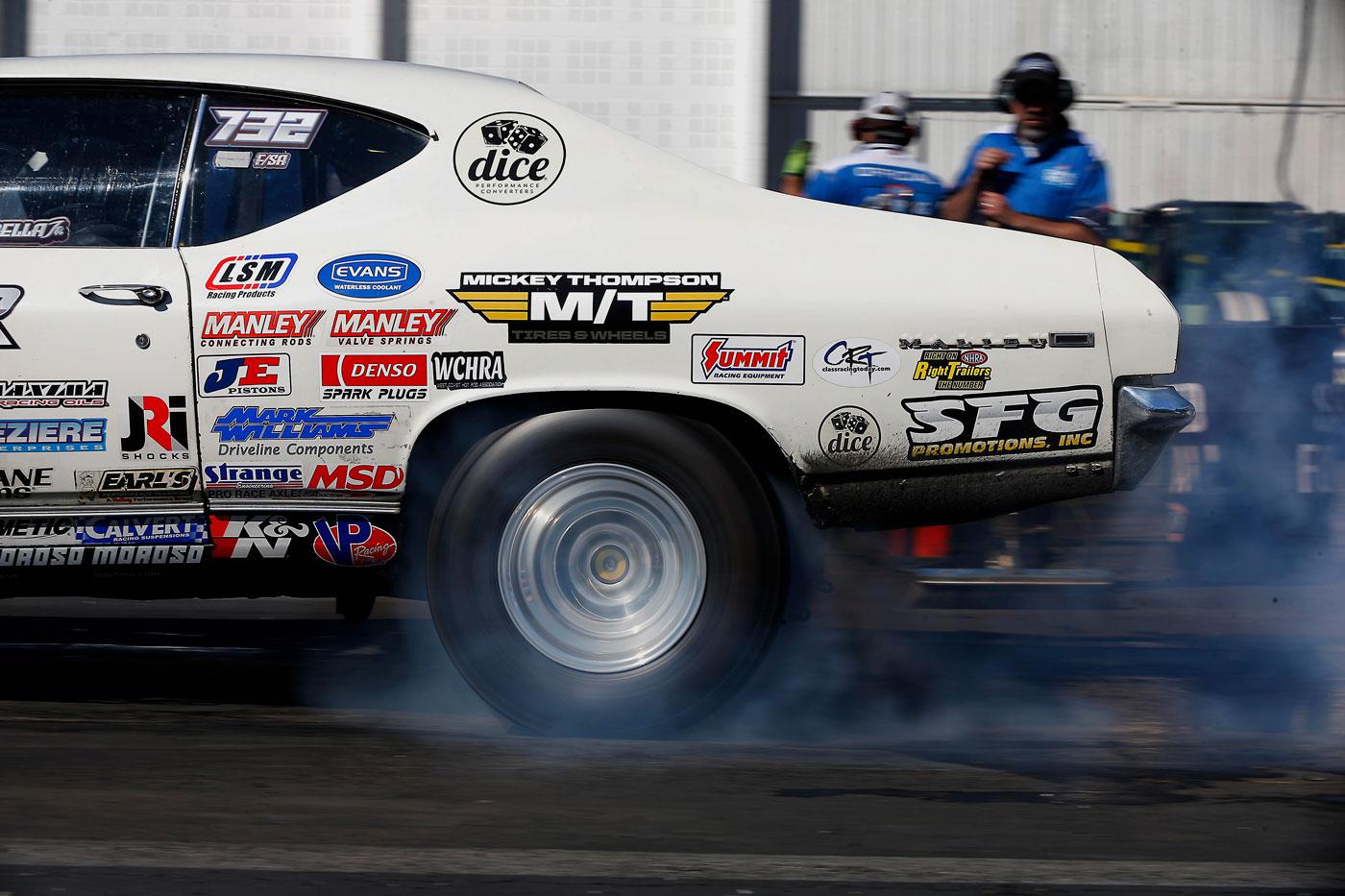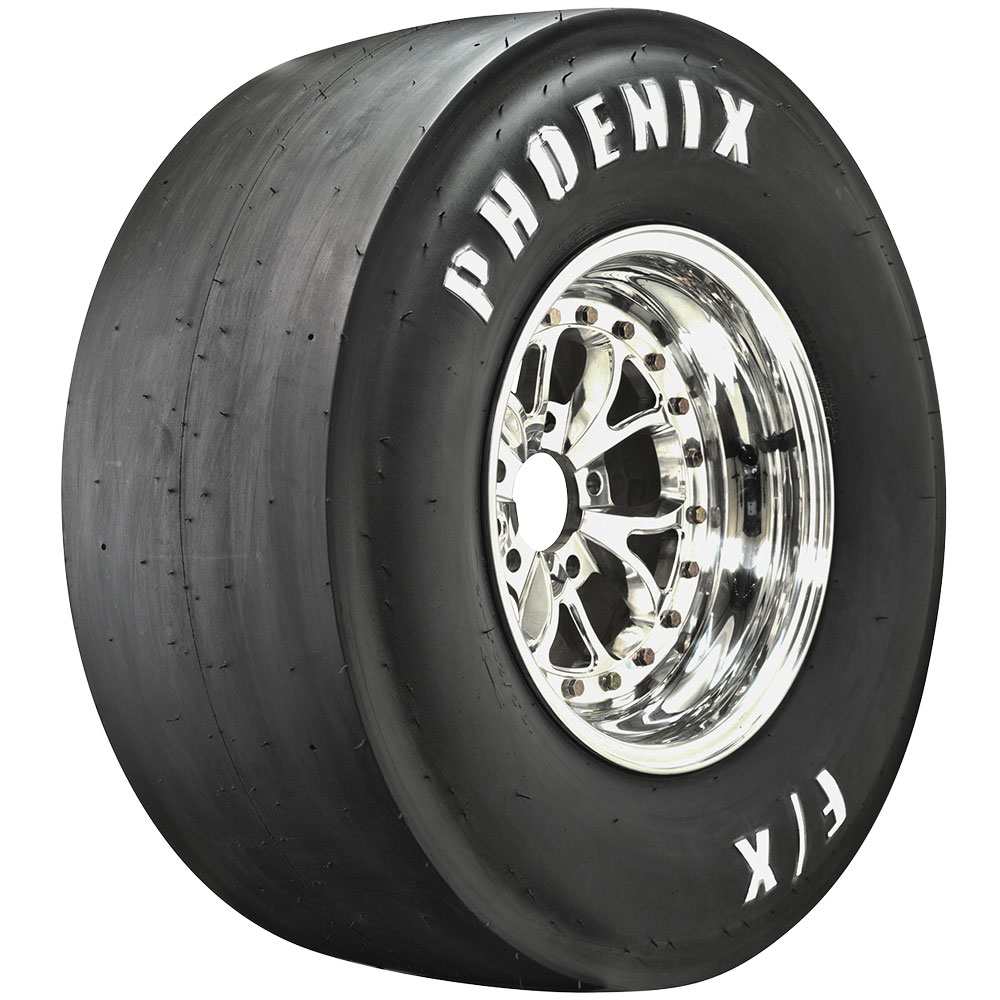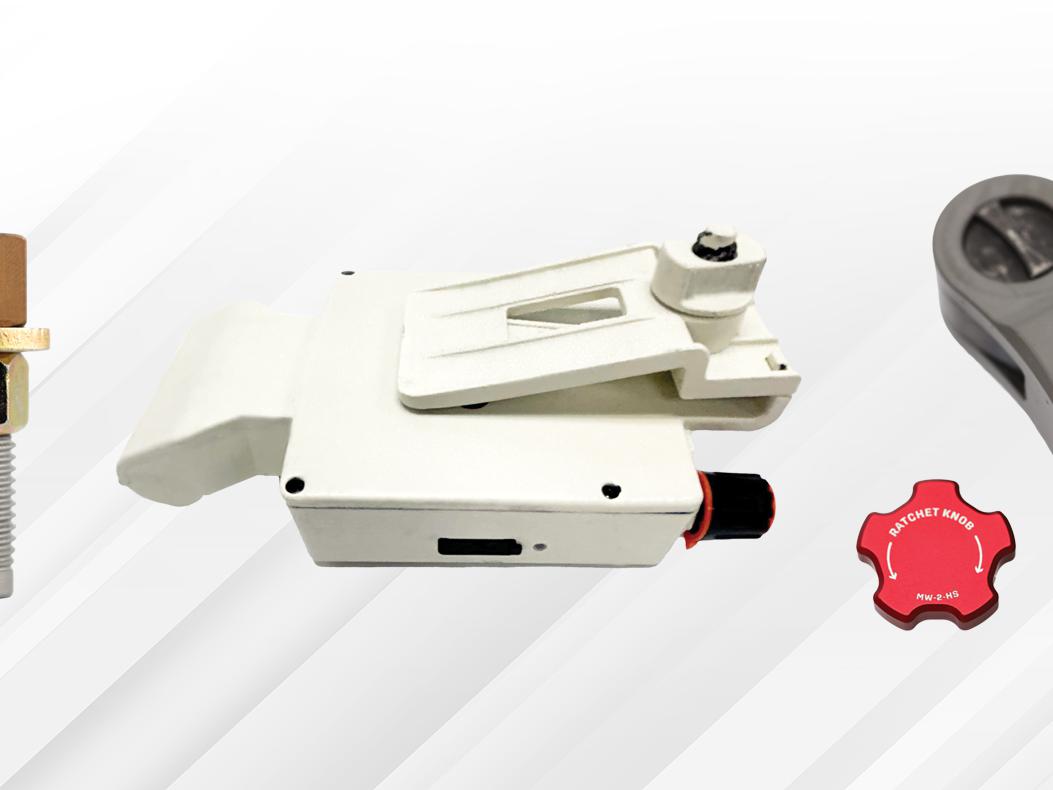Ask the Experts: Choosing Tires for Small-Tire Drag Racing

At the track, tire temperature generally should be about 20 degrees over the track temperature. “On colder days, do a longer burnout,” recommended our source at Mickey Thompson Performance Tires & Wheels. “On hotter days, just get a little smoke and clean them off. The shorter the burnout, the less rubber will wear away, so the tires will last longer.” Photo courtesy of Evan Smith/Mickey Thompson Tires & Wheels.
Bias-ply vs. radial is often the first decision for these racers, but additional factors should be considered, too, before they burn that rubber on the drag strip.
It’s as simple as this: “Racers are looking for traction, something that can move their car as quick as it can,” said Faron Lubbers of Hoosier Racing Tire, Lakeville, Indiana. Sounds easy enough.
But while the goal is straightforward, the best choice for straight-line competitors isn’t always cut and dried, even for a class whose very name (“small-tire”) suggests a measure of structure. How to know, then, what specific requirements and factors racers should consider when choosing racing rubber for small-tire drag classes? We tapped Lubbers and other tire experts to find out.
The Basics
“When determining the tire for a race application, there are several things to consider,” said Mike Crutchfield of Coker Tire, Chattanooga, Tennessee. First among them are “the height, width, and circumference of the tire, along with the construction—whether to use a radial or bias-ply.”
“Radials have come a long way in the last few years, but if a racer is dealing with marginal surfaces and a lot of horsepower, a radial is tough to make work, because it has to dead hook,” Lubbers said. “That’s why they spray the track so much at those radial events. But on an unprepared surface or a marginal track, it’s more of a challenge to hook up the radial initially than a bias-ply.”
“Definitely in a no-prep situation the bias-ply tire will absorb more energy on the starting line,” said Jason Moulton of Mickey Thompson Performance Tires & Wheels, Stow, Ohio. “But it’s also absorbing energy down the track, which makes the bias-ply slower than the radial, ultimately. We’ve seen people pick up anywhere from five-hundredths to a tenth in the eighth-mile on a radial. If track conditions are good, or the tuning setup can work with the radial, it is going to be quicker.”
While they seem like separate considerations, tire size and construction are interrelated, particularly with bias-ply tires. Bias-ply slicks grow at speed, as much as an inch and a half at 150 mph, Moulton said. When determining how much tire will fit under the car, he recommended clearance of “no less than 3/4 inch side-to-side, depending on the suspension. For a leaf-spring-style suspension, or an old coil-spring suspension, it’s best to leave at least an inch.”
The circumference of a bias-ply tire can vary as well, Moulton said, which is why the company writes the circumference on the tread of the tire. When buying a set of slicks, “make sure they’re matched up within half an inch. If the difference is more than that, with a race car with a locked or spooled rearend, the tires will try to steer the car in one direction or another. You definitely don’t want that.”
Hoosier marks its bias-ply tires with a reference number that correlates to the tire’s rollout length as it comes out of the mold and has gone through the company’s post-inflator process. When a set is ordered, “we pull two tires with the same numbers on them and send them out together, so 9.9 out of 10 times, if they’re aired up the same way when they’re mounted, they’ll have a matched set,” Lubbers said.
From there, decision parameters “go into the horsepower level and weight of the car,” Moulton said. In heads-up classes, for example, “the horsepower levels tend to get a lot higher, so racers want a tire with a compound and sidewall that’s going to hold up to the weight and horsepower. With a heavier car—which in our world is something above 3,000 pounds—and high horsepower—say north of 800—they’ll want something with a firmer compound and stiffer sidewall. Stiff sidewalls tend to scare people. They think they won’t absorb the energy needed with their application. But the sidewall stiffener tends to keep the tire round and keeps the footprint a little bit bigger on the ground.”

When racers “talk tires, they like to just talk about hard and soft,” Lubbers said. But they should look for a tire “that has some toughness. They want to get as much traction as they can, but they also need toughness, because those cars get wheel spin. They’re not usually dead hooked in a marginal condition. The racers need something that, when it’s spinning, doesn’t ruffle up and get the wavy tread to it. That’s the toughness part.”
Tire Care, On-Track and Off
At the track, the general rule regarding tire temperature is that it should be about 20 degrees over the track temperature. “On colder days, do a longer burnout,” Moulton recommended. “On hotter days, just get a little smoke and clean them off. The shorter the burnout, the less rubber will wear away, so the tires will last longer.” This holds true for both radial and bias-ply tires, he said.
Between race seasons, “keep them out of the weather and in a controlled environment,” Lubbers said. “You don’t want them to freeze.”
Keep air in the tires and weight off of them in the offseason, Moulton said, as that will help them hold their shape. Also, store the tires away from “high heat or high electrical sources, like a furnace, a welder, or an air compressor,” he added. “That will prematurely age the tires.”
All of our sources agreed with Crutchfield when he said, “We do not recommend any type of chemical treatment for race tires. It could damage the integrity and corrupt the rubber compound of the tire.”
“And don’t put them on chassis dynos,” said Lubbers. Strapping down the car and running the tires on rollers “creates all kinds of heat, which will tear the rubber right off.” Wheel Considerations
When it comes to wheel selection, “wider is better up to a certain point,” Moulton said, “but that’s dictated by the height and tread width of the tire.”
“I wouldn’t put a 10-inch tire on anything less than an eight-inch wheel,” Lubbers said. “The ultimate thing would be around a 10-inch wheel. The wider wheel is an advantage because it gives a better profile of the tire’s tread on the surface of the track.”
Securing the tire to the wheel with rim screws or beadlocks is recommended when using a bias-ply tire to keep the tire from slipping on the wheel. Racers using wheels wider than the tread width to maximize the tire’s footprint should step up to beadlocks, Moulton said.
“Some of these guys are running 28x10.5s on a 14-inch-wide wheel. When the bias-ply tires grow going down the track, they also try to pull the beads in.” If that happens, especially with low air pressure in bias-ply slicks, the bead can unseat “pretty quick,” Moulton said. “Usually that happens at the top end of the race track, which is the worst place for it to happen.”
“I know they’re a lot of money,” Lubbers admitted, but beadlocks “are the ultimate setup.”
SOURCES
Coker Tire
cokertire.com
Hoosier Racing Tire
hoosiertire.com
Mickey Thompson Performance Tires & Wheels
mickeythompsontires.com
 MEMBERSHIP LOGIN
MEMBERSHIP LOGIN JOIN PRI
JOIN PRI


